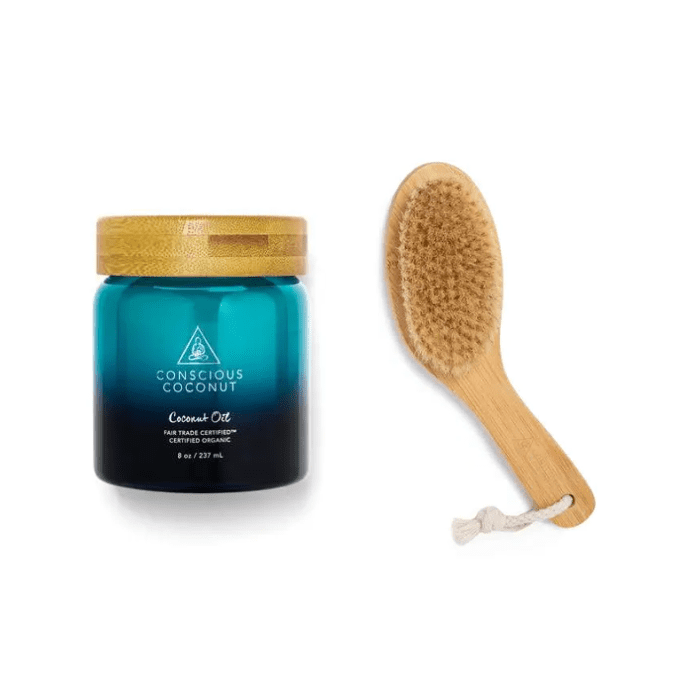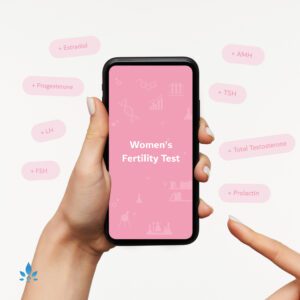Could the Skincare Products I am Using Affect my Fertility?


Many of us are guilty of hoarding an extensive collection of cosmetics and skincare products; some of them are favourites that we use everyday, others barely used and relegated to the back of the cupboard. How many of us though, can honestly say we know exactly what ingredients our beauty staples contain? How many of us have stopped to consider that many of these products are full of chemicals, things added to extend the shelf-life, or keep our make-up from sliding off our face? Do we ever stop to question what these additives and preservatives might be doing elsewhere in our body?
What are endocrine disruptors?
Endocrine disruptors are attracting more attention globally, not least because they are found in so many products we use on a daily basis, including personal care items and cosmetics. They are environmental chemicals that mimic or block hormone action; sometimes by binding to the sites that endogenous hormones are supposed to bind to, sometimes by preventing the synthesis or metabolism of these hormones. Reproduction is a process regulated by hormones and, as such, it is susceptible to the negative effects of endocrine disrupting chemicals. These can manifest as subfertility, infertility, menstrual cycle irregularities, anovulation and impaired oocyte (and sperm) quality. The exact mechanisms by which endocrine disruptors impede fertility are unclear; however, as our awareness of how widespread these chemicals are grows and as infertility rates continue to rise, perhaps a deeper understanding is needed.
Which chemicals should I look out for in my products?
One of the problems with endocrine disruptors is that there are a large number of them and avoiding them altogether may prove difficult. Particularly as identifying which, in a sometimes very long and very unpronounceable list, are the questionable ingredients.
Many of the endocrine disruptors found in beauty products are non-persistent, meaning they are removed from the body rapidly, thus there is no build-up effect. However, repeated usage of the same products, over a prolonged time period, means exposure can be consistent and long-term.
Here we present a list of some of the endocrine disruptors most commonly found in cosmetics and personal hygiene products. It is fair to say that the data is minimal for the vast majority of these and definitive conclusions are lacking, but we will attempt to provide a summary of the information that is currently available.
Phthalates
These are found in personal care products. In the case of cosmetics, most phthalates enter the body via dermal absorption, i.e. through the skin. Animal studies have suggested that high dose phthalates lower oestrogen levels and inhibit ovulation, but there is no equivalent data in humans. Human studies have predominantly focused on couples undergoing IVF, where higher phthalate exposure seems to correlate with a lower oocyte yield. One study found that increased phthalates in the urine, correlated with a reduced follicle count. However, this could not be replicated in other work.
Time To Pregnancy (TTP) is a marker of fecundability. When exploring the effects of phthalates, TTP has varied across different studies. There was even some evidence that certain phthalates reduced the TTP. Furthermore, effects were not always consistent between men and women, so in future studies it would be important to assess the exposure levels of both members of a couple. Overall, there is currently insufficient data on which to draw definitive conclusions.
Triclosan (TCS) and triclocarbon (TCC)
TCS and TCC are antimicrobials found in soaps and personal hygiene products, such as toothpaste and deodorant. Exposure is via dermal absorption and ingestion and, growing concerns over their potential safety profile has led to their use in consumer products being regulated by the Food and Drug Administration (FDA) in the USA.
Animal studies have suggested that TCS may be anti-oestrogenic, that it disrupts the synthesis of LH and FSH and that its presence correlates with lower ovarian and uterine weight. Studies in humans are limited, but high levels correlate with poorer IVF outcomes and it can affect sperm quality in males. There is currently no data showing any link between TCS or TCC and TTP.
Benzophenones
Benzophenones are added to products to extend their lifespan by providing protection from UV light. They are found in sunscreen, lipstick, hairspray and body lotions and, therefore, usually enter the body via the skin. Concerns about their effects on fertility came from in vitro (cell culture) studies and animal work where they were shown to have oestrogenic-like activity and affect menstrual cycle length in rats. To date, there has been no work supporting these findings in humans and the only study looking at TTP was performed on males.
Whilst the experimental data is currently lacking, the knowledge that the metabolites of these products can be stored in adipose (fat) tissue, extending the time in which they can exert a negative effect elsewhere in the body; warrants further research into their mechanism of action.
Parabens
Parabens are widely used in cosmetics because they act as preservatives. Often, more than one paraben will be added to a product, as they can act synergistically. They are very widely used; in fact, the National Health and Nutrition Examination Survey in 2005/2006 found that some of the most common parabens were detectable in more than 90% of participants. They were also found at much higher levels in women than in men.
Animal studies have suggested that parabens have weak oestrogenic activity and are anti-androgenic, meaning they block the action of the male sex hormones. Human studies have suggested an association between high paraben levels and shortened menstrual cycles and lower follicle counts. High exposure to particular paraben metabolites has been associated with a longer TTP, but the relationship is only seen with female exposure. Furthermore, this finding has not been replicated in other studies.
Glycol ethers
These are solvents that were traditionally used in an industrial setting, but are now increasingly added to personal care products such as perfume and liquid soap because they are considered to have low acute toxicity. There are more than 30 glycol ethers in use, all with differing properties and toxicities.
Most work to date has involved occupational studies, whereby those working in the semiconductor industry reported disrupted menstrual cycles and an increased risk of miscarriage. Animal studies have suggested that various glycol ethers have an adverse effect on ovarian function, but this has yet to be extrapolated to human studies. There is a possible association between high levels of exposure to certain metabolites and increased TTP, but validation of these preliminary results is necessary.
Conclusion
The titular question asked by this article is surprisingly difficult to answer. Could the contents of your bathroom shelf and/or make-up bag really affect your ability to conceive? Furthermore, when we are exposed to so many different chemicals in our everyday lives, is it really ever going to be possible to identify which, if any, are causing us actual, measurable harm?
In researching this topic, it soon became abundantly clear that there are significant gaps in our knowledge and many unanswered questions remain:
- Where multiple endocrine disruptors are present in the same product, do they have a synergistic or cumulative effect?
- The ability to successfully produce live offspring (fecundability) is complex and couple-dependent. Males will also be exposed to endocrine disruptors in their daily lives, how much of an effect does this exposure have on a couple’s fertility? Are the chemicals typically the same, or different; and could things that are relatively harmless to females, have a more drastic effect on the male reproductive system?
- The conclusions we are trying to make at this stage are largely based on animal studies. Those looking at human cases, tend to use the success and/or failure rate of IVF as a measure. There is a need for more studies designed to look at TTP, using environmentally-relevant doses of chemicals.
So where does this leave us? Preliminary work provides few definitive conclusions, but certainly raises awareness of just how widely used some of these chemicals are. Perhaps it is time we all made a switch away from chemically-laden products with incomplete safety profiles? Whilst the data remains inconclusive from a scientifically significant perspective, the fact is that more and more people want to understand exactly what ingredients are in the products they are using. So much so, that there are a growing number of ‘clean beauty’ products available; products that promote their use of natural, chemical-free ingredients.
Taking care of the skin is one of the most important part of a good and healthy lifestyle, try Nabta’s Cystic acne pack.
Sources:
- Cho, Yeon Jean, et al. “Nonpersistent Endocrine Disrupting Chemicals and Reproductive Health of Women.” Obstetrics & Gynecology Science, vol. 63, no. 1, Jan. 2020, pp. 1–12., doi:10.5468/ogs.2020.63.1.1.
- Hipwell, Alison E, et al. “Exposure to Non-Persistent Chemicals in Consumer Products and Fecundability: a Systematic Review.” Human Reproduction Update, vol. 25, no. 1, 1 Jan. 2019, pp. 51–71., doi:10.1093/humupd/dmy032.
- Rattan, Saniya, et al. “Exposure to Endocrine Disruptors during Adulthood: Consequences for Female Fertility.” Journal of Endocrinology, vol. 233, no. 3, June 2017, pp. R109–R129., doi:10.1530/joe-17-0023.
- Smarr, Melissa M., et al. “Urinary Concentrations of Parabens and Other Antimicrobial Chemicals and Their Association with Couples’ Fecundity.” Environmental Health Perspectives, vol. 125, no. 4, Apr. 2017, pp. 730–736., doi:10.1289/ehp189.













































